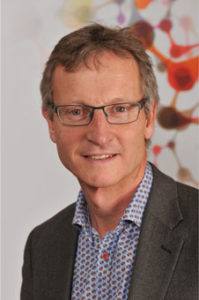Profile: Professor Ian Morison
22/10/2018
The diagnosis for childhood cancer is devastating, but it’s not just the family who feel the effects.

As soon as haematologist Professor Ian Morison sees the tell-tale leukaemia cells through his microscope he knows the next three years are going to be full of stress for the patient – cure rates are now great compared to the 1960’s, but there is still a huge cost involved for families. It’s a sobering feeling.
Research into childhood leukaemia has already made massive strides. We know the identity of the mutations in leukaemia cells that cause the disease, and we know that vulnerability to leukaemia occurs in early fetal life. Funding from the Otago Community Trust through the Otago Medical Research Foundation contributes to this research.
Professor Morison, from the University of Otago’s Department of Pathology has now discovered an interesting pattern in development cells – these are cells found before birth and in babies that disappear when the body matures for life after birth. It appears as if these particular development cells remain in the one in 3000 or so children who get childhood leukaemia each year.
“We’re speculating they have a role, and that something is happening to these particular cells. We therefore need to find where these cells come from and understand their functions.”
“Internationally, this is a unique approach, but we are only one piece in the jigsaw – identifying the cells of interest is just the first step for further studies to develop targeted clinical treatments.”
At present Professor Morison and his team are painstakingly sequencing and analysing thousands of cells to find DNA methylation patterns in the blood cells of babies born prematurely and in newborn babies, and comparing them to leukaemia cells’ sequences.
“We have already found patterns of interest, but they need to be “black and white” for us to be confident in our predictions, so the search continues.”
“This is what we are using the Otago Medical Research Foundation funding for.”
“It may be far from the rest of the world, but we have the resources here to add to global knowledge. We’re supporting an infrastructure of excellence at Otago by nurturing careers offering an interesting field of research. We’re providing training to our students – particularly to PhD student Abdul Alsaleh who has been working in the project. And we are feeding into excellence in the New Zealand health system.”
“But ultimately, we have eyes on the horizon. While it’s long-term research I feel optimistic we can make a difference to the statistics and to the families affected by childhood leukaemia – it’s what makes the research enjoyable.”